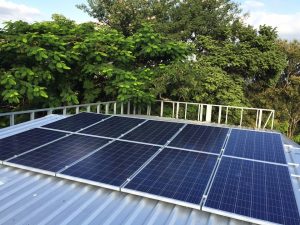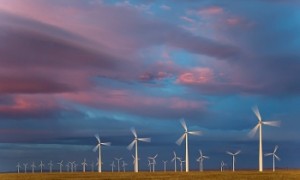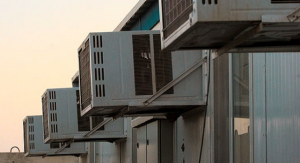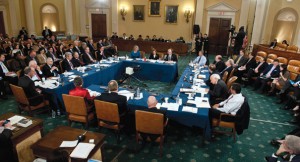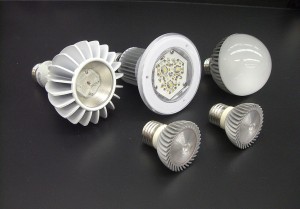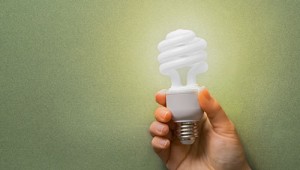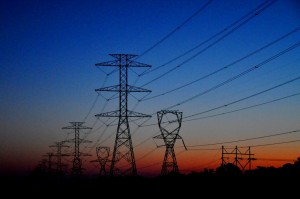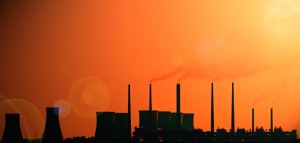60 item(s) were returned.
Principal
CACW|Watts
As we continue to debate what the future mix of grid generation will be, we should also critique projections of grid demand that suggest the largest share of future generation will continue to derive primarily from central power sources. Distributed resources like on-site wind, solar, and energy efficiency are filling U.S. power needs in greater amounts every year while also offsetting central generation requirements. The structure of our system is changing in ways many policymakers and investors are not seeing. It would be a mistake to underestimate the potential of clean energy. In 2015, the Energy Information Administration’s (EIA) figures… [more]
View InsightSenior Scientist
UFA Ventures, Inc.
There have been many voices lately saying that renewables could produce 80% or more of the world’s energy by 2050 in order to limit global warming to 2.5°C, as long as we develop sufficient energy storage and bring up efficiency and conservation. But the real issue is raw materials. It takes about 500 tons of steel and 1000 tons of concrete per MW of wind power. Even more to connect them to the grid. The United States has used 40 million tons of steel to build 48,800 wind turbines totaling 74,512 MW and costing about 150 billion dollars. Wind energy… [more]
View InsightProfessor of Public Policy
Georgia Institute of Technology
City skylines have long been a symbol of innovation and prosperity. What you can’t see is that these same buildings are some of the largest energy consumers in the United States and are therefore responsible for significant amounts of the nation’s carbon pollution. In August 2015, President Obama and the U.S. Environmental Protection Agency released the final Clean Power Plan, regulating carbon pollution from existing power plants for the first time. Since then, many cities have released Climate Action Plans, setting targets for carbon emissions. The success of these two initiatives are mutually dependent. EPA’s Clean Power Plan requires strong… [more]
View InsightThe Senate recently passed the bipartisan Energy Policy Modernization Act (S.2012), co-authored by Senators Lisa Murkowski (R-AK) and Maria Cantwell (D-WA), by a vote of 85-12. In 2015, the House passed its own comprehensive energy efficiency bill, the North American Energy Security and Infrastructure Act of 2015 (H.R.8). The bills will shortly head to a Conference committee whose efforts to reconcile different language, in areas like energy efficiency, could face a difficult challenge. The White House strongly opposes H.R.8, stating that it “undermines successful initiatives designed to modernize the Nation’s energy infrastructure and increase our energy efficiency.” According to an… [more]
View InsightPresident
The Stella Group, LTD
Over 20 states are reviewing their net-metering rules for solar energy and at least 10 are conducting value of distributed generation studies. But is this just delaying the inevitable — that states must embrace policies that promote energy conservation technologies rather than sustain their traditional grids? And are solar energy systems the only culprit? In fact, energy conservation technologies have already significantly impacted baseload demand patterns. According to the Department of Energy (DOE), light-emitting diode (LED) installations increased in all applications between 2012 and 2014, more than quadrupling to 215 million units overall. Energy Star notes “In 2014…American families and… [more]
View InsightExecutive Director
Energy Storage Association
It’s been two months since the Environmental Protection Agency (EPA) released the Final Rule for the Clean Power Plan (CPP). Even if you haven’t read all 1560 pages yet, you probably know the gist of it by now. At its core, the CPP identifies three building blocks in setting the goal for each state: (1) lowered heat rates at coal-fired steam plants, (2) increased utilization of existing natural gas combined cycle plants, and (3) increased deployment of utility-scale non-emitting renewables. Most notably, energy efficiency (EE) is missing from that list, which is a change from the 2014 proposal. However, while… [more]
View InsightNASA has used thermoelectric energy, or the conversion of waste heat to electricity, for decades to power spacecraft and the Mars Science Laboratory Rover. However, thermoelectric energy has attracted minimal attention in the alternative-energy world due to its limited commercial viability, until recently. Last year, Michigan State University (MSU) with the support of the Lawrence Berkley National Lab developed a new class of thermoelectrics using a compound called tetrahedrite that is believed to be more cost-effective and has the potential for everyday use. One start-up finding success building on the findings from MSU is Alphabet Energy. They have developed a stand-alone… [more]
View InsightProfessor of Public Policy
Georgia Institute of Technology
Making use of energy efficiency can help contain the cost of complying with the EPA’s Clean Power Plan and reduce electricity bills. Yet as climate policy discussions try to balance the urgent demand for quick action with upfront capital investments, the benefits of energy efficiency must be viewed in the long term. As efficiency programs are being ramped up by utilities with an over-capacity of power plants, rates may rise for a few years before they fall. Policymakers and stakeholders need to get past “rate fixation” to see the long-term value of energy efficiency. With the strong “nudge” of the… [more]
View InsightFounder and CEO
SMART WATER, SMART CITY LLC
Around the country, a new conversation is emerging among municipal leaders and utility executives as they explore the energy/water nexus. While Senator Murkowski started the discussion at the federal level in 2014, local leaders are just beginning to question the impact of the energy/water nexus. The water/energy nexus deals with the need for water to produce energy, and for energy to treat and distribute clean water. Water infrastructure is an essential public service in any city and is intrinsically linked to energy. Smart technologies and smart strategies for water and energy utilities are needed to address conservation challenges and form… [more]
View InsightExecutive Director
Environmental and Energy Study Institute
According to the EPA, its proposed Clean Power Plan (CPP) would lead to a 30 percent cut in carbon emissions from the power sector by 2030, compared to 2005 levels. The CPP sets a customized goal for each state, which takes into account its existing policies and the unique structure of its energy system. The current draft regulation gives states interim goals for 2020-29, and a final target for 2030. The EPA proposal offers a great deal of flexibility for states to choose how best to achieve these emissions reduction goals. The CPP suggests four “building blocks” that states can… [more]
View Insight